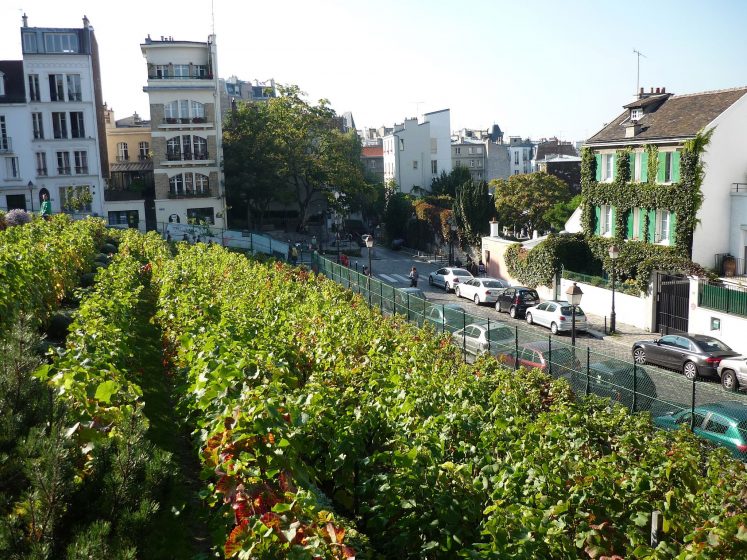Not known Facts About City Blooming
Not known Facts About City Blooming
Blog Article
An Unbiased View of City Blooming
Table of ContentsThe City Blooming IdeasRumored Buzz on City BloomingMore About City BloomingThe 10-Second Trick For City BloomingCity Blooming - The Facts
Fascinated in growing food for sale in the City of Chicago? Below is a listing of frequently asked inquiries relating to the rules and regulations that cultivators should consider when intending a city farming job.
The zoning change does not modify any various other codes dealing with composting, structure permits, buying or renting City possessed property, business licenses or ecological contamination. There are existing codes that regulate these problems and they stay completely impact and might apply to your project. Neighborhood gardens are usually possessed or taken care of by public entities, civic organizations or community-based organizations and preserved by volunteers.
Urban farms expand food that is meant to be offered, either on a not-for-profit or for-profit basis. As a result of their industrial objective, city farms require a company permit. Yes. A neighborhood garden is allowed to market surplus create that was grown on site if the sales are accessory or secondary to the garden's key objective described above.
The Single Strategy To Use For City Blooming
Composting is enabled but only for plant product that is created and utilized on website. The amount of compost material can not surpass 25 cubic yards at any offered time according to the requirements in 7-28-715 of the City's Municipal Code. Yes. Because the dirt at a lot of brand-new yard sites requires changing, compost, soil, wood chips, or various other materials can be gotten to create or enhance the growing space - landscaping.

If a building permit is required then the hoophouse will certainly be considered an accessory building. You can learn more regarding the building permit needs by speaking to the Division of Buildings. The 25,000-square-foot size limit is planned to stop a solitary neighborhood garden from dominating a provided block or taking away from the block's existing domestic or industrial character.
The limit does not apply to gardens found in Public Open Space (POS) districts. Can there be more than one community garden that is 25,000 square feet on a solitary block? Fence is not called for, however, yards that have huge car park areas may be required to mount secure fencing or other landscape design attributes.
A Biased View of City Blooming
B1 & B2 areas call for that all business use tasks be carried out inside. Is secure fencing needed for metropolitan ranches? Fencings may be required, along with landscape design and screening, for specific car parking areas and exterior job or storage space locations depending on location and the specific activity taking location.
Yes. Urban farms call for building permits and zoning authorizations before building. Other types of city evaluation might be required relying on specific frameworks, activities, size, landscaping, licensing, public heath and stormwater monitoring problems. A lot of these needs are determined in the job style or allowing process, nonetheless, the candidate might be responsible to separately identify details licenses or permits that might be required.
Yes. The kind of certificate is figured out by what is taking place at the site. The Division of Company Matters and Consumer Security can aid determine the specific sort of visit this web-site organization permit that's needed. Yes. Off street car parking is required for most industrial tasks in Chicago. The needed variety of garage is based on the variety of staff members dealing with site and not the square video of the expanding space.
Facts About City Blooming Revealed

An urban ranch can market compost material produced on site, nonetheless, the operation has to abide with the policies in 7-28-715 of the Chicago Municipal Code. Aquaponic systems are permitted indoors on urban farms in lots of zoning districts.
Approximately 5 hives or swarms of honey bees might be maintained as an accessory use. Beekeepers have to sign up with the Illinois Division of Farming. For even more details about the proposed zoning amendment you may call the Department of Housing and Economic Advancement, Bureau of Preparation and Zoning at 312.744.8563.
Farming in cities and city areas A city ranch in Chicago. Urban farming refers to different methods of growing. https://yoomark.com/content/home-city-blooming, processing, and dispersing food in metropolitan areas. The term likewise relates to the area activities of animal husbandry, aquaculture, beekeeping, and cultivation in a city context. Urban agriculture is distinguished from peri-urban farming, which takes location in rural locations beside residential areas.
The City Blooming Ideas
It can include an activity of natural farmers, "foodies" and "locavores", who look for to develop social networks based on a shared principles of nature and community holism. These networks can establish by means of official institutional assistance, ending up being incorporated into regional town as a "transition town" movement for sustainable urban growth.
In either case, the much more direct access to fresh vegetable, fruit, and meat products that may be understood through city farming can enhance food safety and food safety while lowering food miles, causing reduced greenhouse gas discharges, thus adding to climate adjustment reduction. Some of the very first proof of metropolitan agriculture comes from Mesopotamia.
Report this page